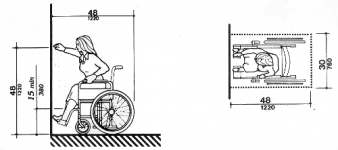RAKocher
Senior Member
- Location
- SE Pennsylvania
Around 30 years ago I got the strong opinion that most receptacles in commercial buildings should be placed at around 4 feet off of the floor with the only exceptions being maybe common areas, lobbies, corridors, etc., but even than it depends.
I was involved in an office reno awhile back, and a furniture company did the design of several back to back cubical work stations running down the side walls of a room with the desks perpendicular to the walls. When I said that I was going to put a receptacle and a network jack on the wall above each desktop, the women whose employees were to use the room got visibly upset saying, "She doesn't want to see that stuff next to these new desks!" Each desk also had a pedestal file cabinet on the wall side, and when I told her that I can't put them down there, because you wouldn't be able to open the drawers with things plugged in, she left in a huff, and I did what I said I was going to do.
With no nest of cords, cables and receptacle strips getting kicked around at everyone's feet, It actually turned out to be one of nicest, neatest work areas the company had!
I still see brand new buildings with receptacles and network jacks underneath permanent countertops, desks fastened to the wall and behind office furnishings. Is this ever going to change or maybe I'm I just seeing the wrong buildings?
I was involved in an office reno awhile back, and a furniture company did the design of several back to back cubical work stations running down the side walls of a room with the desks perpendicular to the walls. When I said that I was going to put a receptacle and a network jack on the wall above each desktop, the women whose employees were to use the room got visibly upset saying, "She doesn't want to see that stuff next to these new desks!" Each desk also had a pedestal file cabinet on the wall side, and when I told her that I can't put them down there, because you wouldn't be able to open the drawers with things plugged in, she left in a huff, and I did what I said I was going to do.
With no nest of cords, cables and receptacle strips getting kicked around at everyone's feet, It actually turned out to be one of nicest, neatest work areas the company had!
I still see brand new buildings with receptacles and network jacks underneath permanent countertops, desks fastened to the wall and behind office furnishings. Is this ever going to change or maybe I'm I just seeing the wrong buildings?




